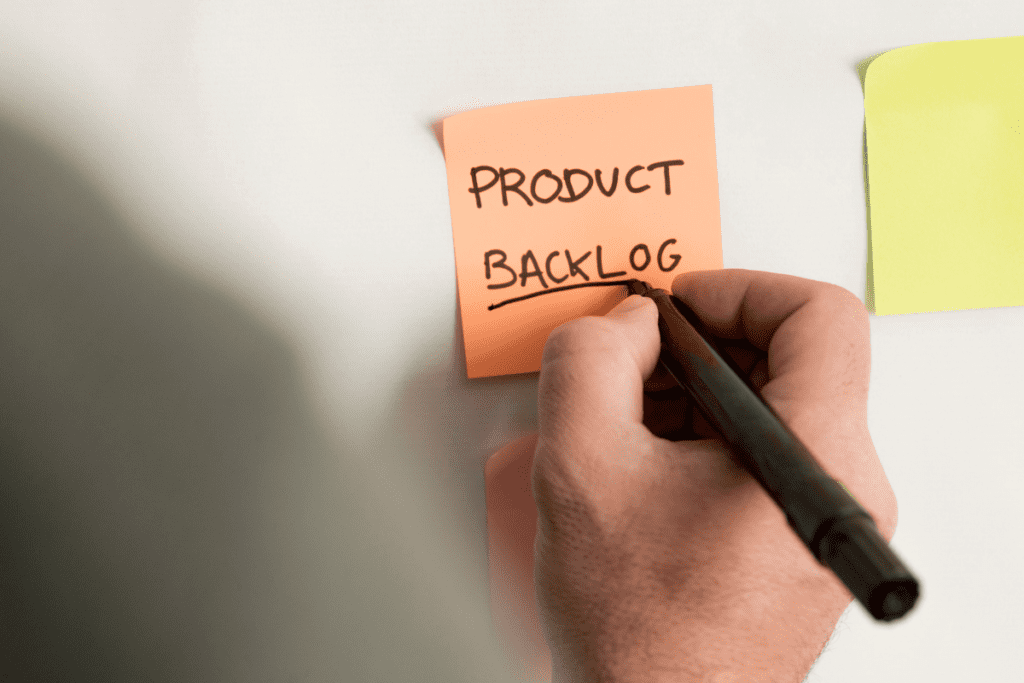Are crucial development tasks getting lost, causing delays, and contributing to misunderstandings? That’s the danger of a disorganized product backlog, and you can only solve these issues when you start at the root of the problem.
Through this blog post, we’ll provide a comprehensive guide to backlog prioritization. This is a powerful tool that will help you navigate through the process with ease and precision. Keep reading to explore benefits, techniques, and tips for better product backlog prioritization to enhance your team’s productivity.
5 benefits of backlog prioritization
In its simplest form, a backlog is a list of all things that need to happen within a project. Making that list of backlog items is a good first step, but it’s not the only one to take. Making the choice to prioritize your product backlog offers several benefits. Here is a closer look at what they are and why they matter.
1. Getting to the valuable items first
There are many moving parts of the development process and it’s easy for distractions to get in the way of progress. By honing in on the most important matters at hand, you can ensure that your team is working on tasks that provide the most value to all parties.
2. Identifying the most critical issues
What do you do when you feel like there are small fires everywhere that are waiting to be put out? Prioritizing backlog items allows you to identify the most critical issues that need to be addressed.
3. Responding to the environment faster
Technology developments or changes in customer needs can have a big impact on what your roadmap should look like. Prioritizing your backlog enables businesses to respond quickly and efficiently to shifts in priorities and requirements.
4. Improving alignment and productivity
There may be many different voices that contribute to conversations and opinions about where to start with your product backlog. Agreeing on backlog prioritization ensures that teams are working toward the same goals and collaborating effectively. According to one McKinsey report, well-connected teams see a productivity increase of 20 to 25 percent.
5. Speeding up time-to-market
Companies everywhere are facing the need to do more with less, faster than ever before. That’s no easy feat, businesses can reduce costs and deliver products and services to market faster by putting their attention and resources to the best possible use.

Important factors for prioritizing product backlog items
Not sure where to start when organizing your backlog? Consider this your bite-sized guide to putting backlog tasks and items in the proper order.
Business value: You should focus on items that provide the most value to customers and the business. This will help support Return on Investment (ROI) for your development costs.
User feedback: The voice of the customer must be a key consideration when prioritizing product backlog items. User feedback can help you identify the most important features to develop.
Risk: Prioritize items that address the most significant risks. For example, if there are critical security issues that need to be addressed, they should have top priority.
Dependencies: Do some digging to ensure dependent backlog items come before less urgent items. This way, you can clear the path and avoid the surprise of discovering a previously unknown dependency down the line.
Effort and cost: Once you work through the other four criteria, prioritize backlog items that are easier and less expensive over those items that are more complex and costly.
Want more details on organizing a product backlog in Scrum? Read Scrum Product Backlog: What Is It and How to Maintain One.
Effective product backlog prioritization techniques
While there are best practices for product backlogs, it’s worth exploring the different options that are available to you. To prioritize items effectively, businesses can use several techniques. These include:
MoSCoW
This method involves categorizing items as Must-haves, Should-haves, Could-haves, or Won’t-haves. Must-haves are critical items that the product has to include. Should-haves are important but not critical. Could-haves are desirable but not essential. Won’t-haves are low-priority items that can be deferred or removed altogether.
Kano model
In this technique, you organize your list into basic requirements, performance requirements, or excitement requirements. Basic requirements are essential features that customers expect. Performance requirements are features that increase customer satisfaction. Excitement requirements delight customers and add to your unique selling proposition.
Buy a feature
This is a customer-driven method for prioritizing product backlog items. First, a select group of customers get a budget and purchase the features they want. The most popular features get top priority from stakeholders. Less popular features are deprioritized.
Note: Each technique has its strengths and weaknesses. That’s why it’s essential to select the technique that works best for your business and team. You want to choose one that maximizes business value and customer satisfaction.
What’s the most effective way to order the product backlog?
Answering this question requires you to establish a balance among all factors, with your unique business needs and objectives in mind. Then you can develop a process tailored to your organization.
With that said, remember that your product backlog isn’t something that you “set and forget.” You’ll need to continuously evaluate and adjust your approach as circumstances change, market trends evolve, and customer needs shift.
Who handles prioritizing the backlog?
To make meaningful progress, you need someone to ensure the project stays on track and your backlog helps to deliver maximum value. At the heart of this process is the Product Owner, who can take the lead in aligning the backlog with strategic objectives and customer needs. Part of the job is actively collaborating with stakeholders, customers, and the development team. This helps to maintain a comprehensive understanding of priorities and expectations.
Take the guesswork out of your product backlog
It’s your turn to make a change and begin the journey toward a more efficient development process. You can transform your product backlog into a tool for success with the right strategies in place.
Looking for more insights? Stay connected to the Unosquare blog for more helpful guides to modern software development, and get in touch today if you need added support for your next project from our experienced and talented development professionals.

